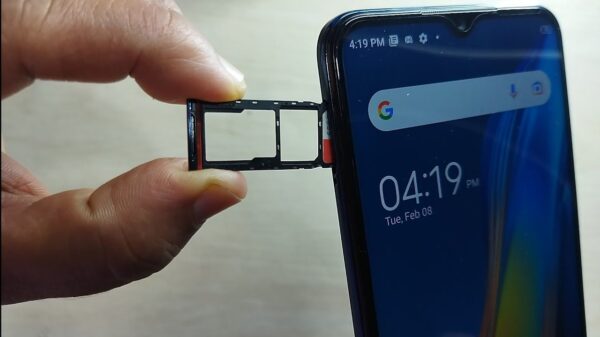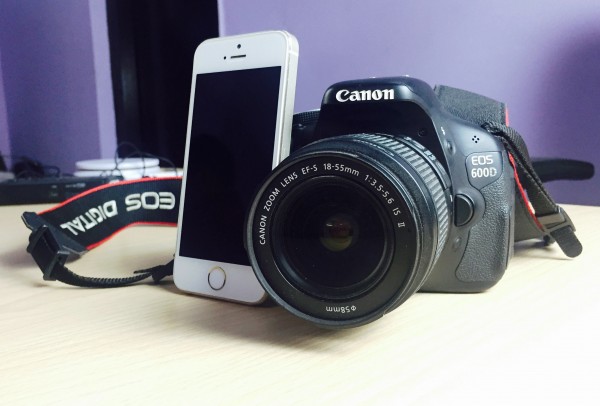Point-and-shoot camera sales have seen a significant decline worldwide according to many studies. With smartphone cameras improving exponentially in the past few years, it raises the question: Are point-and-shoot cameras actually worth it anymore, or should you just buy a top camera phone?
Here is the TRUTH
“Certain photos you don’t need a DSLR, such as when there’s bright midday lighting and you’re capturing a basic photo, you don’t need a costly camera. The fact is, a basic photo like this will be a basic photo regardless of what camera you’re using to make it.”
However, there are other instances where a real camera is by far the better choice, such as when you want to change lenses, or need flexibility, or want to photograph sports or want to zoom in or shoot at low apertures to capture beautiful scenes. Sure, Apple’s latest iPhone has Portrait mode but “it’s not the same” as having a fast lens.
Meanwhile, there are no losers” in the smartphone camera vs real camera debate. In fact, both are useful for different situations.
FACTS
Size Matters
Almost all cameras are bigger than a mobile phone. Phones have the advantage of portability, but this is the only advantage against the Cameras.
Lenses
A good camera lens is essential to being able to make good clear photos. If the lens is small and low-quality, you are not going to get the best results.
Lenses on phones are tiny and most often made of plastic or sapphire crystal. Lenses for real cameras are larger and most often made of multiple glass elements.
Light
Light is essential for creating a photograph. The light must first pass through the lens, which bends it and focuses it so an image can be captured by the sensor. If there is any distortion in the lens the image quality will be compromised. Good quality larger lenses are more capable of producing sharper, more accurate images.
Zoom
The range of lenses for cameras is enormous. Even small compact cameras have the capacity to zoom from wide-angle to telephoto optically. When the lens does the work of manipulating the light and sending it to the sensor, the quality is far better. On a phone when you zoom in, the image is just enlarged digitally and the quality suffers dramatically.
Image Sensors Size
Sensor size is the other main factor in the image quality difference between phones and cameras. By sensor size, it’s not the megapixel count, often phones can now have more megapixels than cameras. The actual physical dimensions of the sensor are what make the biggest difference.
A phone sensor is tiny and measures approximately 4.8 x 3.6 mm. There’s no room in a camera to put a larger sensor further away from the lens. Sensor size in cameras varies a lot, but suffice to say they are a lot larger than the ones in phones. Compact cameras have the smallest sensors in cameras which measure approximately 6.2 x 4.6 mm. Currently, the largest sensors in mirrorless and DSLR cameras are 36 x 24 mm (full-frame).
Some phones boast huge megapixel counts, similar or larger than some cameras. It’s better to have fewer megapixels on a sensor with a larger physical dimension than Squeezing more pixels into a tiny sensor.
If you have the same number of megapixels on a sensor that is physically larger you will have technically higher quality images.
Creative Intention
One of the most significant differences between a phone camera and a real one has nothing to do with the technology. When most people pull out their phone to take a photo it’s for a quick snapshot. The picture may be posted to social media and quickly forgotten about.
Using a real camera requires more focused and creative intention. You are more likely to take time and think creatively when you are taking photos with a camera. This increases the likelihood of producing better photos.
The Best Camera is the One You Have with You NOW!
This is true. You cannot take a photo if your camera is in a bag in the cupboard at home. But you don’t often forget your phone. This makes it a very good camera because it is right there with you.
Learning to use your phone to do more than taking snapshots will improve the quality of all your photos. Spending money on a real camera that you don’t learn to use properly and leave at home is not going to make you a better photographer.
The biggest downside to phone cameras is the lower quality images they produce. Most of the time this is not relevant as most photos are shared and viewed on mobile devices these days.
The things that will keep you from relying too much on your phone for taking pictures are:
- Lower quality images.
- Less control over exposure settings.
- Little ability to effectively zoom.
The possibility of getting a stunning image that cannot be enlarged and hang on the wall.
These things should not stop you from taking photos with your phone.
However, are still many years left when real cameras will hold their own against phone cameras. How quickly the technology evolves will determine just how long




























